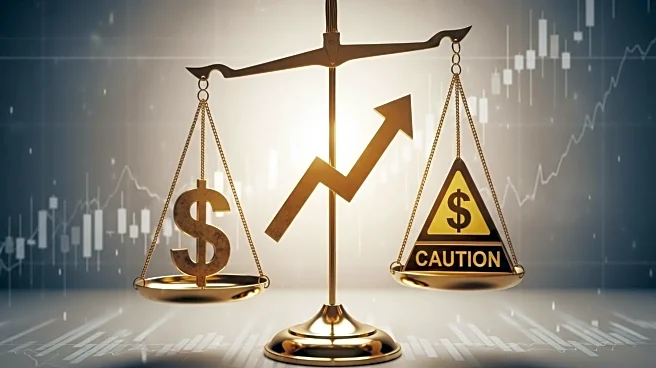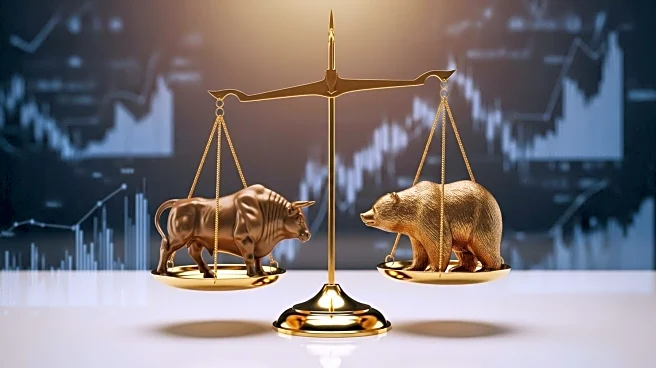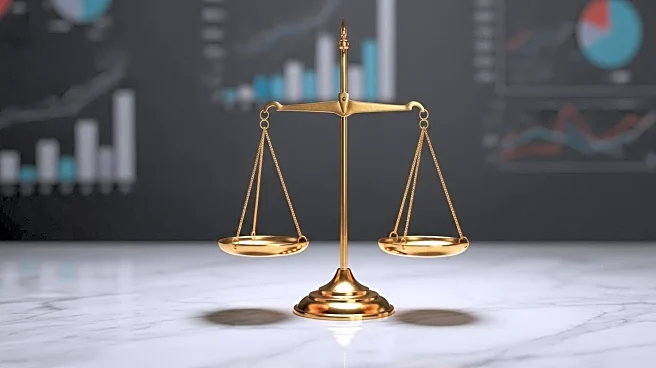What is the story about?
What's Happening?
The Federal Reserve's anticipated interest rate cuts for the remainder of 2025 are facing uncertainty due to stronger-than-expected U.S. economic data. Investors had been expecting multiple rate cuts from the Federal Open Market Committee (FOMC) to stimulate economic activity through cheaper borrowing. However, recent data, including a decrease in weekly jobless claims and a GDP growth rate of 3.8% for Q2 2025, suggests the economy is performing better than anticipated. This has led to a reassessment of the likelihood of further rate cuts, with Deutsche Bank's Jim Reid noting that strong economic data has pushed front-end Treasury yields higher, impacting rate-sensitive sectors like technology. Despite hopes for continued rate cuts, inflation remains elevated at near 3%, providing the Fed with reasons to remain cautious.
Why It's Important?
The uncertainty surrounding the Federal Reserve's rate cuts has significant implications for the U.S. economy and financial markets. Rate cuts are typically seen as a tool to stimulate economic growth, and the expectation of such cuts has influenced investor sentiment and market dynamics. The stronger-than-expected economic data challenges these expectations, potentially leading to market volatility and adjustments in investment strategies. The Fed's cautious approach reflects the delicate balance between supporting economic growth and managing inflation, which remains above the target rate. This situation affects various stakeholders, including businesses, investors, and policymakers, who must navigate the complexities of economic indicators and monetary policy decisions.
What's Next?
Investors continue to anticipate potential rate cuts in the upcoming October meeting, with CME's FedWatch barometer indicating an 87.7% chance of a further 25 basis points cut. However, Federal Reserve officials, including Chair Jerome Powell, emphasize a measured approach based on incoming data and evolving economic conditions. The Fed's focus remains on achieving maximum employment and stabilizing inflation at the 2% target. As economic data continues to unfold, the Fed's decisions will be closely monitored, with potential implications for market trends and economic policy. Stakeholders will need to adapt to the evolving monetary landscape and its impact on economic activity.
AI Generated Content
Do you find this article useful?














